Using Temperament Testing to Choose the Right Dog for Your Family
So, you've gone to the shelter or the breeder's, and all of the dogs and puppies are so cute, you're having a hard time deciding which one you want. One way to guide your decision is by performing a temperament test. Temperament is described as "the sum total of all inborn and acquired physical and mental traits and talents which determines, forms, and regulates behavior in the environment." (W. Handel, The Psychological Basis of Temperament Testing)

In everyday language, a dog's temperament dictates how he or she will react to the things encountered in everyday life. Some dogs' first response is to shy away from unfamiliar things and people, while others are curious and want to investigate. Still others may become aggressive immediately. A particular dog's reaction is determined not only based on genetics (breed), but also on the socialization the dog has received and the environment in which the animal lives.
There are several different test methods – three are presented here. You will choose between them based on the age of the dog and whether or not you want to do the test yourself or use a professionally trained evaluator.
The American Temperament Testing Society
This test is done by a professional, usually at an event of some kind such as a dog show or at a meeting of a breed club. Click here to find upcoming test dates and locations. The purpose of the ATTS test is to give you some insight into your dog's behavioral strengths and weaknesses. Although this can be valuable, evaluating a dog you already have may not be as useful as using a test that can help you choose a dog who best fits into your family environment.
The Society's test is copyrighted and cannot be performed by someone unaffiliated with the ATTS. Dogs must be at least 18 months old to be tested. The ATTS takes into account the behaviors expected of certain breeds, as well as the training the dog has received. For example, a German Shepherd who has been trained as a Police K-9 would be scored differently on aggression than a Corgi who is a family pet. This is the only one of the three tests presented here that looks at the history of the dog in arriving at a score.
The ATTS test consists of ten sections and takes about 10 minutes to complete. Measurements focus on the various aspects of temperament including stability, shyness, aggressiveness, and friendliness, as well as his instinct toward self-protectiveness and protectiveness toward the handler. Dogs are presented with a variety of visual, auditory, and tactile (touch) stimuli designed to evaluate how the dog distinguishes between threatening and non-threatening situations. A dog is said to have failed a section if he or she shows unprovoked aggression, panic without recovery, or strong avoidance.
The National Rat Terrier Association's Test
Although this test was written specifically to evaluate Rat Terriers, it can be used on any breed of dog. It is the only test of the three presented here that can be adapted for use with puppies or adult dogs. Any dog older than five months is evaluated using the adult test. Sufficient instruction is given on the Rat Terrier website to allow any lay person to evaluate a dog.
The National Rat Terrier Association (NTRA) recommends that the tester observe the dog for awhile before trying to evaluate the animal. If the dog is agitated, hyperactive, or makes no attempt to be friendly, the evaluation should not be attempted. The dog should not be evaluated just before or after meal time, and should be allowed a potty break before testing begins. An observer must be present when adult dogs are evaluated, just in case the dog becomes aggressive. The observer may act as the scorer. Un-neutered males and females in heat should not be evaluated. Each dog or puppy is evaluated in an area away from other animals on the property.
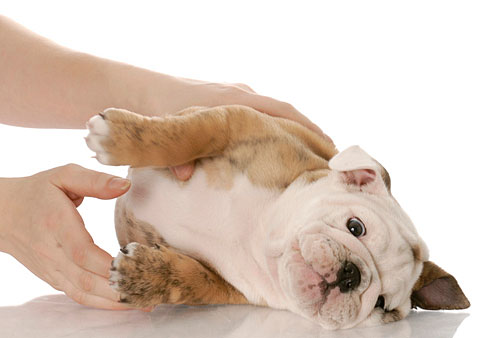
The puppy test includes testing the puppy's reaction to being stroked, cradled then rolled over to expose the belly, exposed to unexpected or unusual noises, attached to a leash and collar, being taken outdoors and around wildlife, having a partially eaten dish of food removed. By observing how the dog reacts in each situation and matching it to the indicators in the NRTA matrix, link to http://www.nrta.com/breedforfoundation/temptest.html you can determine if the puppy is responsive, nervous/shy, aggressive, or independent.
The older dog test has different criteria, but is scored in the same way to categorize an animal as responsive, nervous / shy, aggressive, or independent. The steps for the adult dog test are to put the dog on the leash and test his or her reaction to being outside (including the reaction to wildlife), observing the dog's reaction to your sitting calmly and looking at the dog, seeing how the dog reacts when you talk in a high-pitched voice, looking at the dog's reaction to toys, and testing the dog's prey drive. Finally, the dog's possessiveness to toys and food is evaluated. The test is stopped immediately if the dog shows any aggression.
The Volhard Puppy Aptitude Test
Jack and Wendy Volhard have been helping people train pet dogs for the past 30 years using positive motivational techniques. In the course of their work, they have developed a test that should be given on a puppy's 49th day of life. Prior to that, the puppy is seen as too immature neurologically, and after that, training and socialization change the puppy's in-born instinctual reactions to the various stimuli.
Puppies are tested one at a time, away from littermates and other dogs. Only the scorer and tester are allowed in the area where the puppies are being tested, and the tester must be a stranger to the dog. The scorer should not have a vested interest in the outcome of the test (i.e. the breeder who is selling the dog should not be the scorer.) Testing should be done prior to mealtime, when the puppies are at their liveliest. Puppies should not be tested on the day of or the day after vaccinations are given, or on a day the puppy is not feeling well.
Only the puppy's first response to each test is counted, as the dog is evaluated for:
- social attraction – confident or dependent, tested by how readily the dog approaches the tester when placed in the testing area
- following – willingness to follow a person, evaluated by having the tester walk away from the dog while encouraging the dog to follow
- restraint – dominance or submission in difficult situations, tested by gently rolling the puppy on his or her back and holding the position for 30 seconds
- social dominance – ability to allow a person be the alpha, evaluated by gently stroking the puppy
- elevation dominance – ability to accept dominance when the dog is in a position of helplessness, tested by holding the animal about two feet off the ground for 30 seconds
- retrieving – willingness to do what the person wants him or her to do, evaluated by throwing a piece of crumpled paper and encouraging the puppy to retrieve it
- touch sensitivity – willingness to be touched, tested by gently pressing on the webbing of the puppy's front paw
- sound sensitivity – reaction to loud noises such as a metal spoon banging on a metal pan
- sight sensitivity – response to moving objects, evaluated by tying a string around a bath towel and pulling it in short jerks across the floor in front of the puppy
- stability – size of startle response, tested by opening an umbrella about five feet away from the puppy
Each test is scored on a scale from 1 – 6, where 1 is a puppy ready and willing to do anything and 6 is a puppy who is totally uninterested in everything. The scores are not averaged; rather, each parameter is scored individually because they indicate different things. For example, a puppy who scores mid-range numbers on retrieving, social attraction, and following will likely be very easy to train.
Looking at the group of scores for each puppy allows you to make certain generalizations about the dog's temperament. A dog who scores mostly 1's wants to be the pack leader and may be aggressive and difficult to control. Dogs with lots of 2 scores need a strict schedule and lots of training to overcome unruliness. Lots of categories scored in the 3's indicates puppies who are good with people and other animals, but can be a bit of a handful.
Mostly 4 scores indicate a dog that can be a perfect family pet, recommended for first-time parents. They are easy to train and somewhat quiet, and should be good with the elderly and with children. A high number of 5 scores indicates a dog that may need special handling due to excessive fearfulness and shyness. They need a lot of socialization and a steady, stable home environment without unpredictable young children. Mostly 6's indicate a dog who is so independent he or she has no need for family. These dogs will be great at guarding a junk yard or living in situations where there is not a lot of human contact; however, they will never be cuddly family pets.
Using these tests, or other temperament evaluations can help you choose a dog who will most easily fit into your family environment.
Doggies Den: Latest Articles
 Homemade Thanksgiving Treats for Your Dog
Homemade Thanksgiving Treats for Your Dog
NUTRITION We all want to include our dogs in our holiday celebrations, but hopefully, you're aware that sharing table scraps with your dog isn't always the best idea.
 Keeping Your Dog Safe during the Summer Months
Keeping Your Dog Safe during the Summer Months
HEALTH Summer is coming on fast, so it’s time to plan how you will keep your dog safe and healthy through the lazy, carefree, warm days.
 Vaccination Time Again-Keeping Your Puppy Healthy
Vaccination Time Again-Keeping Your Puppy Healthy
DOG HEALTH So you have your new puppy picked out. There are quite a few shots, treatments and examinations that will keep the newest member of your family healthy.
 Canine Thanksgiving Feast
Canine Thanksgiving Feast
NUTRITION With the wide variety of food at Thanksgiving dinner, chances are you'll want to give your dog something special, too. If you're contemplating what to feed your dog for the holiday, here is a guide to a great Canine Thanksgiving Feast.
 Dog Walking Tips Every Owner Should Know
Dog Walking Tips Every Owner Should Know
DOG FUN Walking your dog is not only crucial to keeping him healthy and happy, it strengthens the bond between your canine friend and his caregiver. There are a lot of obstacles out there. Don’t forget these simple tips to keep your walk fun and safe in the outside world.
 The Benefits of Physiotherapy for your Dog
The Benefits of Physiotherapy for your Dog
HEALTH The same techniques that physiotherapists use to treat a variety of injuries and conditions in humans have been adapted to suit animals with great success. Family pets, show dogs, and working dogs can all benefit greatly from physiotherapy. Dogs whose activities involve a lot of agility are especially susceptible to the types of problems that physiotherapy can address.
 The Decision- Adding a Dog to Your Family
The Decision- Adding a Dog to Your Family
FIRST TIME OWNERSBringing a dog into your family is a decision where many people don’t realize it’s magnitude until after they have the dog. There are a number of things that you need to research before you decide to purchase a dog, and it starts right in your own home.
 Bringing Your Dog Into Your New Baby's Life
Bringing Your Dog Into Your New Baby's Life
HEALTH Many believe that a dog and a new baby cannot happily coexist, so therefore the dog has to go. This is not necessarily the case.  A new baby does not mean you have to abandon your dog.

Doggies Den:
Most Popular Articles

Dog Pregnancy Symptoms
HEALTHIf you suspect your dog might be pregnant, check out part one in this series on pregnant dogs, where we cover pregnant dog symptoms.
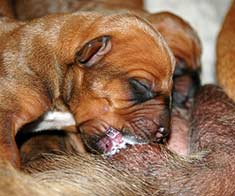
Dog Birth
HEALTHIn the third article of our dog pregnancy series, we look at the wonderful, but messy, process of bringing newborn puppies into the world.

Indoor Dog Potties
DOG PRODUCTSIt's been a long day at work. You were so busy, you didn't even take time to eat a sandwich, let alone run home to let your dog out. You're on your way home, knowing the poor dog is crossing his or her legs by now, when your car breaks down, delaying you even further. Can't somebody make this easier?
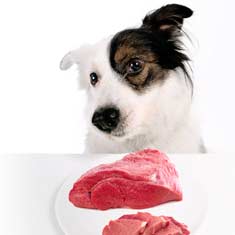
Your Dog’s Digestive System
PHYSIOLOGYEver wonder why your dog eats so fast? Or why he eats gross things? Or why he gets sick to his stomach? Or why his waste stinks so bad? Some of these things are normal, some are not.

Canine Respiratory System
BREATHINGThe basic function of your dog's respiratory system is to bring oxygen in to and remove carbon dioxide from the body. Knowing the symptoms of respiratory diseases can help you help your stay healthy.
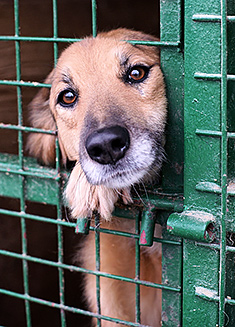
Shelter Dog Adoption Tips for Success
ADOPTION Are you intimidated by the prospect of "rescuing" a dog from a shelter? One reason that you may be wary of adopting a dog from a shelter is not knowing how to choose. Adopting a dog from a shelter can be a rewarding process, if you're prepared to do a reasonable amount of research.

Canine Urinary Tract Infections
SYMPTOMS AND TREATMENTDoes your dog seem to be having trouble relieving his or her bladder? Learn how to recognize the signs of urinary tract infections and how to treat them before they spread.

What to do for Dog Diarrhea
SYMPTOMS AND REMEDIESIf you have dogs in your house for any length of time, you have likely experienced at least one bout of dog diarrhea. Beyond the pain in the tuckus involved in cleaning up the mess, you should know what causes diarrhea, and when it's important to see the vet.
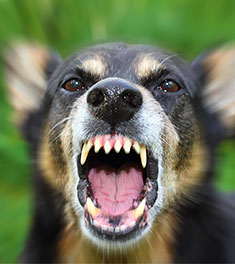
What to do for a Dog Bite
DOG BEHAVIOR Getting bitten by a dog can be scary, and you may be tempted to run around in circles for a while, trying to figure out what to do. Here's our guide to help you manage the situation.

Top Ten Tips for Living with a Senior Dog
DOG HEALTH Bringing home a new puppy is so exciting, but it doesn’t take all that long for your exuberant puppy to grow into a senior dog who may have special needs. Here are the doggies.com top ten tips for taking care of your companion who has been with you through so much.
